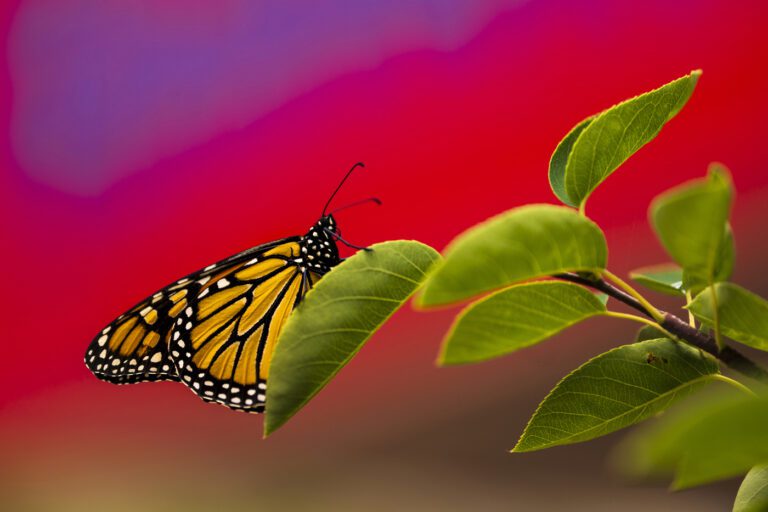The monarch butterfly is one of the most widely recognized and admired creatures native to North America.
The iconic creature, identified by its vivid orange sunset color and white spots that span its black border, has suffered significant population loss in recent decades. Last year, the International Union for Conservation of Nature listed the monarch butterfly as endangered. But the US has yet to do the same, and many states that host the migratory insect do not list it as a species in need of conservation. according to new Northeastern research.
“What is unique about monarchs is that their conservation needs are really about their migratory behavior and because they are sensitive to a wide range of stressors that affect populations.” Damon Hallassociate professor of marine and environmental sciences in the School of Public Policy and Urban Affairs, who co-authored the study published in Conservation Letterssays.
Hall and colleagues analyzed efforts by state wildlife agencies to conserve the monarch butterfly. Instead of federal laws — the U.S. Fish and Wildlife Service has decided that monarchs warrant “endangered species” listing, but has not listed them because of a “lack of agency resources,” the study says — it's up to individual states and wildlife services to protect species.
As part of these protections, states are tasked with identifying “species in greatest conservation need.” Based on the analysis of all available state wildlife action plans;, which each state submits to the federal government as part of a broader conservation effort, the study notes that 15 states that host “critical monarch migration corridors” do not list the monarch butterfly as a species in need of conservation. Ten of those states have critical monarch breeding habitat, the study says.
Critical to the monarch butterfly's conservation is protecting its food source: the milkweed plant, the availability of which has declined as a result of urbanization and agricultural intensification, the study says. As a result, states have focused on propagating milkweed to maintain monarch butterfly populations.
But seven states had no references to monarch butterflies or dairy in their action plans. five of them—Indiana, Kentucky, Montana, Nevada, and New Mexico—”host the monarch butterfly as part of the eastern or western migratory populations.” States, on the other hand, with frequent monarch and milkweed references in their plans and strong conservation programs include Arkansas, Idaho, Michigan, North Dakota, South Dakota, Rhode Island, and Texas.
“This limited attention to critical areas of monarch pathways is troubling,” the study notes.
The monarch butterfly is known to migrate seasonally about 2,500 miles to avoid cold climates during the winter. Using air currents and thermals, millions of insects they travel as far north as Canada to sites in Southern California, Texas, and Mexico, where they overwinter.
“They have a few breeding cycles that they go through as they migrate across the continent, and the habitat that supports them at those stops is very important,” says Hall.
Rather than pointing the finger at states, Hall notes that the inconsistencies in states' different approaches run counter to the broader effort — national and international — to conserve the species.
“What was telling was when there would be a state that had zero reports of monarchs or zero reports of milkweed—and they're in critical breeding areas or migratory habitat,” Hall says. “This is problematic.”
As part of the study, Hall and his team investigated the federal government's decision to stop listing the monarch butterfly as endangered. Among the reasoning, the US Fish and Wildlife Service cited “higher priority listing actions.”
“What we heard from some of the people at the U.S. Fish and Wildlife Service is that there were various interstate coordination activities going on at the time, so they wanted to see how those efforts would go first before throwing the full weight of their biologists and money to start the registration process,” he says.
A pollinator, the monarch butterfly, while not as economically important as native and managed bees, has significant “cultural” significance, says Hall. Although the western population showed some recovery last year, the monarch butterfly has seen a 91 percent decline since 1996.
“Also, their migratory behavior is really unique, and so there's a kind of endearing value,” says Hall. “There are many ways to articulate the value of nature and one of them is its cultural value.”
“The iconic monarch is often the only butterfly people can identify,” Hall adds.
Tanner Stening is a reporter for Northeastern Global News. Email him at t.stening@northeastern.edu. Follow him on Twitter @tstening90.



